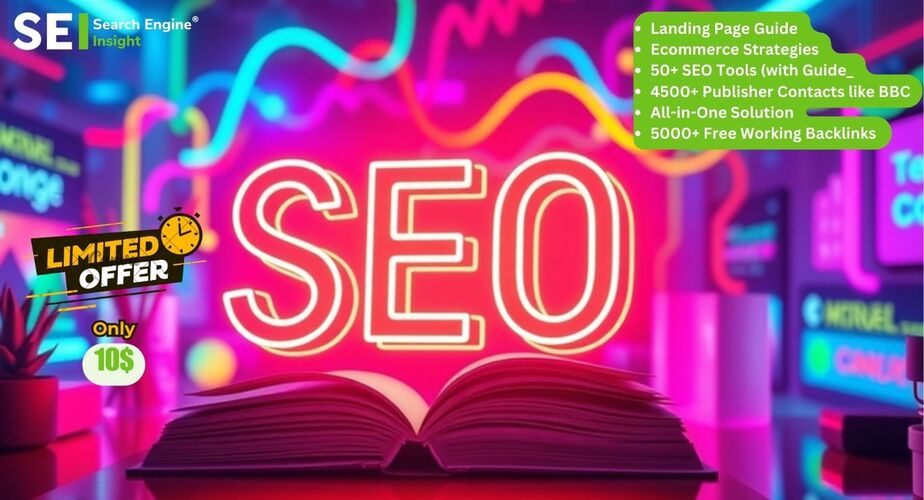User Intent and Keywords: Aligning Content with Searcher Goals
In the dynamic and ever-evolving landscape of Search Engine Optimization (SEO), the nuanced interplay between user intent and keyword optimization stands as a cornerstone for achieving unparalleled success. Beyond the traditional focus on keywords lies a profound understanding of the motivations that propel users to initiate specific search queries — a dimension commonly referred to as user intent. This article aims to delve into the multifaceted dimensions of user intent, its pivotal role in shaping SEO strategies, and the strategic approaches required to align content seamlessly with the discerning goals of the modern-day searcher.

Deciphering User Intent
User intent transcends the mere association with keywords, encapsulating the profound motivations that drive individuals to initiate search queries. The four primary categories of user intent — Informational, Navigational, Transactional, and Commercial Investigation — delineate the diverse spectrum of objectives users pursue. Nurturing an acute awareness of these intent categories is paramount for crafting content that not only resonates authentically with the searcher but also ensures a heightened degree of relevance.
By the way, incorporating Serpstat’s advanced keyword clustering tool adds an additional layer of precision to content optimization, deciphering user intent and allowing for the strategic alignment of content with the diverse motivations encapsulated in the four primary categories of Informational, Navigational, Transactional, and Commercial Investigation.
- Informational Intent: Users seeking knowledge on specific topics.
- Navigational Intent: Users aiming to navigate to a particular website or page.
- Transactional Intent: Users with the intention of making a purchase or engaging in an online transaction.
- Commercial Investigation Intent: Users in the research phase, likely to make purchase decisions in the near future.
Strategies for Strategic Content Alignment with User Intent: A Holistic Approach

1. Holistic Keyword Research: A Foundation for Relevance
Embarking on a journey towards optimal content alignment necessitates a meticulous exploration of keywords. Employ tools such as Google Keyword Planner, SEMrush, or Ahrefs to uncover not only high-volume keywords but also those intricately tied to distinct facets of user intent. A comprehensive keyword research strategy lays the foundation for a nuanced and targeted content creation process.
2. Tailored Content Creation: Meeting Varied Intent Requirements
Segmenting content creation based on user intent is an astute practice. For informational queries, generate in-depth guides, articles, or how-to content that addresses the user’s quest for knowledge. On the other hand, transactional intent warrants the creation of compelling product pages or persuasive sales copy designed to facilitate a seamless user journey. Tailoring content formats to align with user intent ensures a harmonious blend of utility and engagement.
3. Long-Tail Keyword Optimization: Precision in Search Targeting
The integration of long-tail keywords offers a nuanced approach to addressing specific user intent. While short-tail keywords may cast a wider net, long-tail keywords provide an opportunity to cater directly to niche queries. For instance, opting for “best budget smartphones for gaming” over a more generic “smartphones” allows for precision in addressing user needs and preferences.
4. SERP Feature Analysis: Navigating the Search Landscape
Examine the Search Engine Results Pages (SERPs) for targeted keywords, incorporating a keen understanding of the evolving SERP features. Identification of featured snippets, knowledge panels, or other SERP features allows for strategic content creation. Aligning content with these features not only enhances visibility but also positions the content in formats preferred by contemporary search engines.
5. User-Centric Content Structure: Enhancing Readability and Engagement
Organizing content with user intent in mind involves the meticulous structuring of information. Employ clear headings, subheadings, and concise bullet points to facilitate easy navigation and comprehension. For content catering to comparative analyses, ensure clarity and a structured presentation that aids users in making informed decisions.
6. Continuous Monitoring and Adaptation: The Iterative SEO Approach
SEO is a dynamic and iterative discipline. Regularly monitor content performance through analytics tools, assessing the alignment of content with user intent. Be prepared to adapt strategies based on user behavior, emerging search trends, and evolving industry landscapes. An iterative approach ensures sustained relevance and success in the face of an ever-changing digital ecosystem.
Impact on SEO: Elevating Rankings and Fostering User Satisfaction
The alignment of content with user intent extends beyond the realms of enhanced user experience; it directly influences SEO outcomes. User satisfaction, increased engagement, and conversion rates are natural byproducts of content that impeccably aligns with searcher goals.
From an SEO perspective, this alignment serves as a beacon for search engines. As algorithms become increasingly adept at discerning user intent, search engines prioritize results that best cater to those intentions. By consistently delivering valuable and relevant content aligned with user goals, your site stands to gain not only higher rankings on SERPs but also a reputation for being a go-to source in your industry.
Conclusion: Paving the Way for Holistic SEO Triumph in the Digital Landscape
In navigating the intricate dynamics of SEO, embracing the symbiosis of user intent and keywords emerges as a strategic imperative. The pursuit of user-centric relevance is not merely a means to drive traffic; it is a commitment to providing substantive value to users, establishing trust, and cultivating enduring relationships. The harmonious convergence of user intent and keywords catapults digital strategies into a realm of sustained success within a user-centric digital landscape. Embrace this synergy, and witness your SEO endeavors ascend to new heights of resonance and efficacy, positioning your brand at the forefront of industry authority and user satisfaction.




